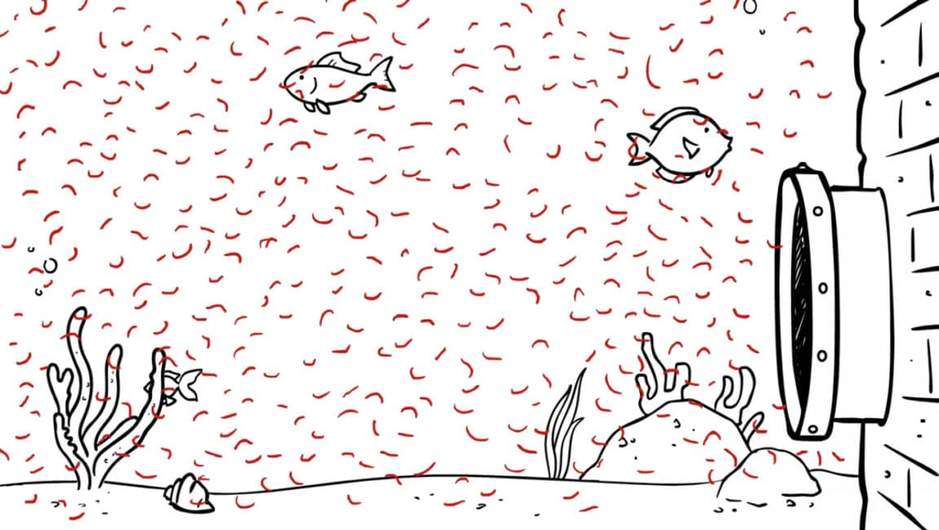
Plastic, we talk about it every day.
The press titles are sinister, and the poignant images, like this dead whale, failed after having swallowed 80 plastic bags, or even these turtles who see their nasal cavities clogged by plastic straws. The plastic is everywhere, going up to to form a continent of plastic or otherwise called “plastic soup” (want to know more: https://www.plasticsoupfoundation.org/en/files/what-is-plastic-soup/)
But this pile of garbage is just the top of the iceberg!
Eh yes, unfortunately much of the pollution is invisible to our eyes, made of plastic microparticles (<5 millimeters and a few micrometers, ie (thousands of a millimeter). These microparticles would be even the most important “contributors” to marine pollution!
Micro-plastics are particles derived from petroleum, most often polyethylene and polypropylene that could be replaced by non-synthetic materials.
85% of these synthetic materials are the same as those used in our clothing; what makes our wardrobe and our washing machine polluters marine all designated.

600,000 to 17,000,000 textile fibers are released for each washing of 5kg of synthetic fabric. . So many particles that end up in wastewater. Multiplied by the number of households throughout the year laundry, in virtually every country in the world, we obtain huge amounts of plastic in the oceans. Europe spills between 70,000 and 130,000 tons of microfibers annually in the oceans.
We are all inadvertently contributing to this growing environmental problem.
Clothes are a source of microplastics; acrylic, nylon and polyester in particular are the main culprits. With acrylic, more than 3,000 fibers per gram can be released in one wash. And a fleece jacket weighing 680 grams loses nearly a million fibers at a time. Maria Westerbos, director of the Plastic Soup Foundation: “Or a pair of 55 gram nylon socks … nearly 136,000 fibers per wash …”

An invisible pollution that ends up in our stomachs
An invisible, pernicious … and very worrying pollution! In the international scientific journal Nature, a team of researchers highlights the presence of plastic waste in the stomach of fish and shellfish marketed: the stomach of tuna, mussel cultures or oysters sold in supermarkets contain plastic waste, and this waste ends up in our stomachs.
The video of the collective Story Of Stuff explains in a fun way this phenomenon:
Solutions to change all that?
Despite the industry’s lack of action, several basic solutions have been invented. The Guppy Friend washing bag by Langbrett, a German outdoor brand, is one of them. Like the Cora Ball, inspired by the natural functions of coral, developed by the Rozalia project in the United States. Both products have a filter function during the wash cycle. The number of fibers they stop has not yet been tested effectively.
– Wear your clothes rather than twice before washing them,
– Say NO to polyester, synthetic fibers and mixed fibers.
Main sources:https://www.plasticsoupfoundation.org/en/psf-in-action/ocean-clean-wash/
https://medium.com/edeni/nos-v%C3%AAtements-synth%C3%A9tiques-polluent-les-oc%C3%A9ans-c356a03331e8
https://storyofstuff.org/movies/story-of-microfibers/
https://link.springer.com/article/10.1007/s11356-016-7703-0
https://www.vegemag.fr/actualite/ces-microfibres-synthetiques-qui-polluent-les-oceans-8368


